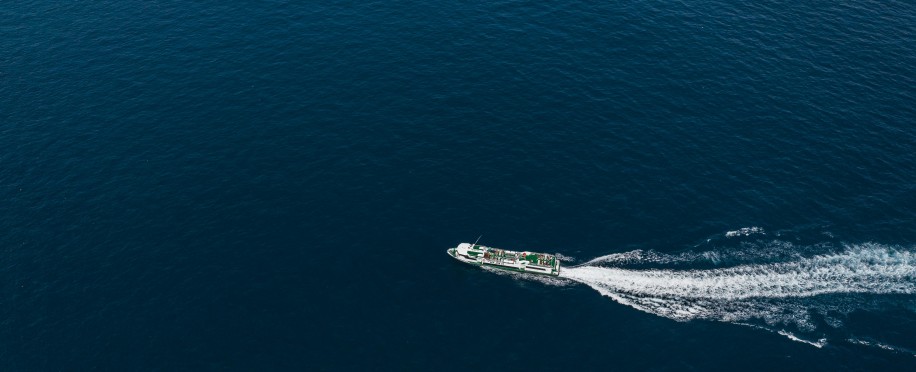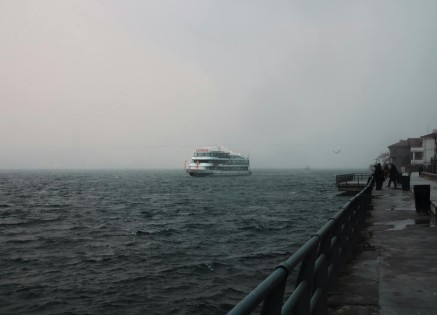Copyright © 2025 lmitac.com All Rights Reserved. Contact - Terms and Conditions - Privacy Policy - Quality Policy - Become an instructor - Vacancies - Sitemap
London Maritime Academy is a trade name for London Premier Groupversion: 2.9.0
London Maritime Academy is a trade name for London Premier Group

Posted on : 6/23/2025, 11:33:35 PM
Not everyone is cut out for command, especially in deep water, where nobody can save you if your operation faces any risks. Becoming a Ship Captain isn't about wearing a uniform or standing behind the wheel—it’s about leading from the front, making high-stakes decisions, and shouldering full accountability for every crew member, every mile at sea, and every piece of cargo onboard. It’s a career that demands more than technical know-how. It asks for grit, emotional intelligence, and the kind of presence that can steady a team through storms—literal and otherwise.
So, what does it take to earn the title Ship Captain?
Let’s take the long view—because that’s exactly what this journey requires.
Being a Ship Captain is about taking full ownership. You supervise the crew, oversee all onboard operations, ensure legal compliance, and manage everything from navigation to safety to cargo integrity. Whether you’re piloting tugboats, commercial ferryboats, or transoceanic vessels, you are the decision-maker. The one responsible when things go wrong—and the one who leads when it matters most.
This isn’t just a job. It’s a level of trust earned over time, tested through pressure, and proven by action.
The first real step? Education.
While the required minimum is a high school diploma, most captains choose to go further. They earn degrees from a Maritime training academy UK —programs in Marine Engineering, Marine Transportation, or Maritime Operations. These institutions don’t just teach navigation or maritime law. They train you to think like a leader in complex environments—where timing, accuracy, and clear communication can mean the difference between smooth sailing and disaster.
And it doesn’t stop at theory. You’ll train on simulators, study propulsion systems, and understand the technical side of shipboard operations. You’ll get familiar with radar, ECDIS, and emergency systems—because this role demands both mental and mechanical readiness.
This is where you move from the classroom to ship deck. To qualify for even an entry-level license, you need documented sea service—360 days minimum, 90 of which must be in near-coastal or ocean waters. And that’s just the beginning.
Your journey will take you through the ranks, including:
Each step builds real-world leadership, technical knowledge, and the ability to handle the unpredictable. From managing cargo loadouts to coordinating with international ports, these aren’t just jobs—they’re chapters in your development.
You’ll learn fast: the ship doesn’t wait for you to catch up. Either you step up—or you step off.

Without a license, you’re not commanding anything.
The U.S. Coast Guard (USCG) sets the benchmark. You’ll need:
But it doesn’t stop there. Additional certifications are essential:
All of these credentials must be held, maintained, and regularly renewed. It’s a system that keeps the best sharp—and weeds out the unprepared.
Let’s be clear—licenses prove you’ve trained. They don’t prove you can lead.
A great Ship Captain commands not just the vessel, but the moment. The pressure. The people. They stay calm during fire alarms, confident when engines fail, and decisive when everyone else is frozen. Most importantly, with the rise of sustainable ship designs, they know how to be green.
The most valuable skills?
This is what separates a license-holder from a captain. And the world knows the difference.
No shortcuts here. Becoming a Ship Captain takes time—typically 10 to 15 years. It’s a long climb up the ladder, through operations, exams, sea service, and certifications. Each level—each hour logged—brings you closer to command.
But here’s the truth: every minute is building the muscle you’ll need when you’re finally in the chair. That moment when the engine dies 100 miles offshore. When the storm hits early. When the crew looks to you for answers.
You won’t rise to the occasion—you’ll fall back on your preparation. That’s what these years are for.
With the right license, your options open up.
Each role has its own tempo, risk profile, and regulatory framework. The one constant? Leadership. Whether it's 10 passengers or 10,000 containers, you're responsible.
Ask any Ship Captain, and they’ll tell you—yes. But only if you’re ready to commit.
This is not a casual career. It doesn’t tolerate ego, shortcuts, or mediocrity. But if you thrive on challenge, if you’re willing to earn your authority, and if you’re ready to spend years building a name that carries weight at sea, then this path offers something few careers can: real command. Real consequence. Real legacy.
So, if you’re serious about it, start now. Get the education. Log the time. Build the mindset.
The helm is waiting.